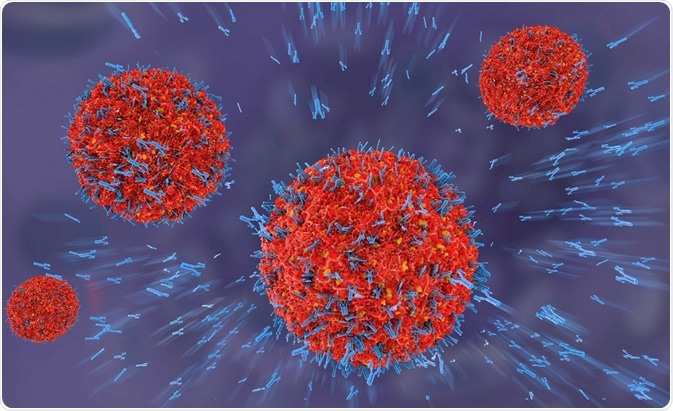
Complement System Overview
The complement system is a set of proteins present in normal plasma that enable antibodies to kill bacteria.
 Credit: Christoph Burgstedt/Shutterstock.com
Credit: Christoph Burgstedt/Shutterstock.comIt was called ‘complement’ because it aided the antibacterial activity of antibodies. However, it is now known that the complement system can be activated early in an infection without the presence of antibodies. This suggests that it may have first evolved as part of the innate immune system.
Complement works with the immune system
Proteins of the complement system react with each other to bind pathogens and trigger an inflammatory cascade response to fight infection.
Many complement proteins are proteases that are activated by proteolytic cleavage. These proteins are called zymogens. The digestive enzyme pepsin is an example of a zymogen. It is secreted as the inactive precursor protein pepsinogen, and is cleaved to pepsin in the acid environment of the stomach.
Precursor zymogens are distributed through the body and activated locally at sites of infection. The system is activated through an enzyme cascade in which one zymogen is cleaved and activated, and then cleaves another, and so forth. The activation of a small number of complement proteins is then amplified by each round of cleavage. The complement reaction can become disproportionate. Thus, regulatory mechanisms also exist to prevent out-of-control reactions.
Complement protects against infection in three ways. Firstly, it activates a large number of complement proteins that bind to pathogens so that they can be engulfed by phagocytes. Second, fragments of complement proteins can act as chemoattractants to recruit phagocytes. And last, complement components at the end of the chain damage bacteria by putting holes in the membrane.
Complement components
There are three pathways by which the complement cascade can be activated on the surface of a pathogen. The classical pathway is initiated by binding of C1q to the pathogen surface, or binding of C1q to antibody/antigen complexes, forming a link between innate and adaptive immunity.
Another mode of activation is the mannan-binding lectin pathway (MB-lectin pathway). That is initiated by binding of the serum protein mannan-binding lectin to mannose-containing carbohydrates on the pathogen. The last mode of activation is called the alternative pathway. It’s initiated when an activated complement component binds to the surface of a pathogen.
Each pathway triggers a series of reactions leading to the creation of C3 convertase, known as the ‘early’ events of complement activation. C3 convertase is bound covalently to the pathogen. C3 is cleaved to generate C3b, which mediates inflammation. C3b targets the pathogen for destruction by a phagocyte.
It also binds C3 convertase to form C5 convertase, which produces C5a, a small peptide mediator of inflammation, and C5b, a component that begins the ‘late’ stages of complement activation. The late stage is a series of polymerization reactions resulting in a membrane-attack complex. The membrane attack complex creates a pore in the cell membrane of some bacteria and viruses.
Complement is a significant mechanism for recognition and clearance of pathogens. The system can be activated by pathogens or a pathogen-bound antibody. The activity of the complement system is modulated by regulatory proteins preventing tissue damage that could result from incorrect binding of activated component proteins.
Reviewed by Afsaneh Khetrapal Bsc (Hons)
Sources:
Further Reading
Last Updated: Mar 2, 2018























.png)











No hay comentarios:
Publicar un comentario